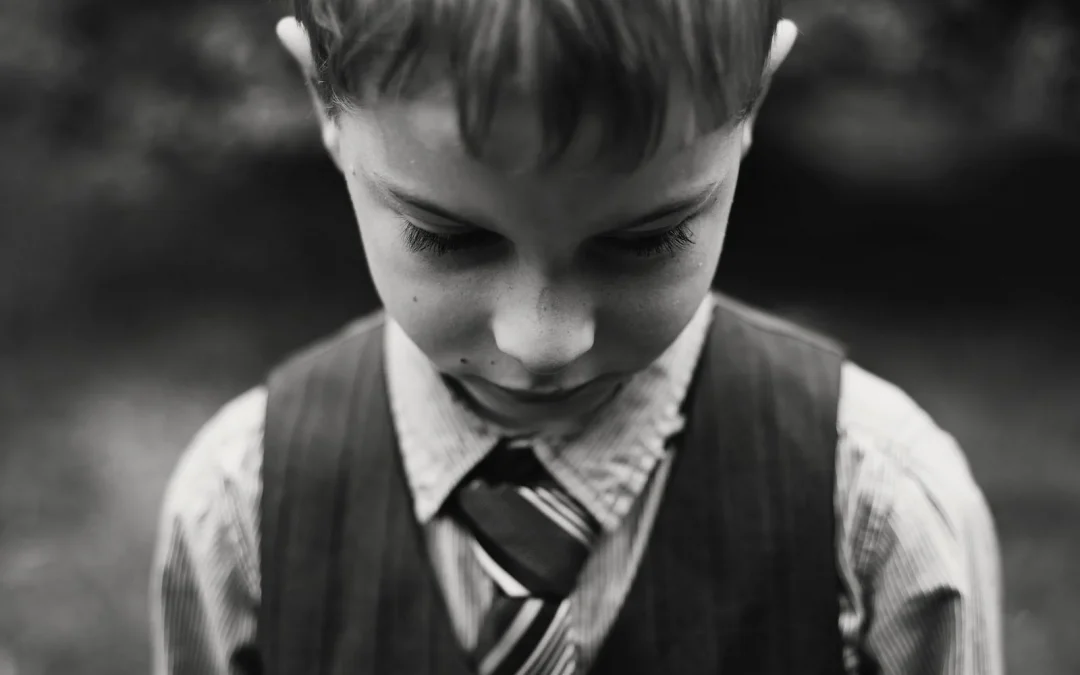Traumatic reactions occur when action is of no avail, when neither resistance (fight) or escape (flight) is possible. We have a survival system built into our brain, sometimes called the reptilian brain, which responds to danger (or the threat of danger) by activating the sympathetic nervous system into fight or flight. If we can do either, the risk of trauma is lower. When no recourse is possible, an individual may go into a freeze response and dissociate from their body.
Traumatic events are defined as “extraordinary” not because they occur rarely (unfortunately quite the contrary) but because they overwhelm and confront human beings with the extremities of helplessness and terror.
The human system of self-defense becomes overwhelmed and disorganized, and the reactions persist in an altered and exaggerated state long after the actual danger is over. Traumatic memories get preserved in an abnormal state, set apart from ordinary consciousness. Normal memories get processed by the brain and then stored away. When we remember something, it is a recollection, somewhat faded or old. Traumatic memories are stored differently, not processed but stored raw along with the concurrent emotions, smells, sights, sounds and event. When the memory is activated, it is like a replay of what happened, as raw and terrifying as the original event. Almost like a video that gets replayed at the touch of a button. This is called a flashback. As an example, a war vet walks down the street and a car backfires. It triggers a traumatic memory from war and he reacts as if in a gun battle, screaming, diving to the ground, agitated and in that moment back in the past. Any attempt to talk to him will fail until his system comes back to baseline. The trauma of the past opens up and replays in the present.
The body needs to be able to complete the action the trauma truncated. Animals do not become traumatized if they can complete the cycle. As an example, if a gazelle is chased by a cheetah and escapes, it will then shake until the trauma has passed through his body. The cycle is complete and the gazelle system returns to baseline. It holds no trauma after the event because it discharged the fear and was able to escape. Captivity, being helpless and trapped in the danger causes trauma.
The Aftereffects of Trauma
Symptoms of PTSD (Post Traumatic Stress Disorder) or trauma can be divided into three rough categories: hyperarousal, intrusion and constriction.
Hyperarousal: The human system of self-preservation goes into permanent alert and state of hyperarousal. The traumatized person sleeps poorly, startles easily and reacts irritably to small provocations. No normal baseline exists anymore, the body is always on alert for danger, both in waking and in sleep. The traumatic events recondition the nervous system.
Intrusion: The traumatic moment becomes encoded in an abnormal form of memory which breaks into ordinary consciousness spontaneously in the form of flashbacks during waking times and nightmares during sleep. Certain events can trigger the traumatic memories which then open up with all the vividness and emotional force of the original event.
Constriction: what happens when a person is completely helpless and any form of resistance is futile? The helpless person escapes instead by altering their state of consciousness. The person becomes numb and feels like the events are not happening to her, like watching herself be abused from outside her body. It is like a hypnotic trance of sorts, and is a surrender of voluntary action and distortion of reality. The constriction of the field of consciousness produces amnesia of the event, it splits off from ordinary awareness. This is how the traumatic event becomes a repressed memory.
To control their pervasive fear, traumatized people restrict their lives, they avoid going places or being in situations they fear will trigger them. Constrictive symptoms interfere with anticipation and planning for the future. They narrow and deplete the quality of life of the person. Intrusion clashes with constriction, flashbacks flood the person with intense overwhelming feelings, followed by amnesia or numbing.
Trauma affects Attachment
Traumatic events destroy the victim’s fundamental assumptions about the safety of the world, the positive value of the self and the meaningful order of creation.
Basic trust sustains a person throughout the life cycle and forms the basis of all relationships and faith. Traumatized people feel utterly abandoned, alone, cast out of human or divine systems of care and protection. They have a sense of alienation and disconnection that pervades their relationships. Traumatized people feel they belong more to the dead than the living.
Shame is a response to being helpless, to the violation of body integrity and the indignities suffered in the eyes of another person.
Guilt happens as victims blame themselves, it is easier to believe it was us than to face the reality of utter helplessness.
Trauma causes conflict between closeness and withdrawing from others, the trauma survivor has both a desperation for connection and is too terrified to sustain it. Terrified of being with people and terrified of being alone. Intense and contradictory feelings of need and fear.
Complex/Developmental Trauma
Trauma can be a single event or can occur in captivity, such as in a family, a religious cult, a prisoner (such as someone sex trafficked), a brothel or a concentration camp. The worst fear of any traumatized person is that the moment of horror will reoccur, and this fear is realized in victims of chronic abuse. Chronically traumatized people are continually hypervigilant, anxious and agitated. They have constant apprehension of imminent doom, a fear that something terrible is always about to happen. Chronically traumatized people no longer have any baseline state of physical calm or comfort.
In victims of a single trauma, symptoms usually abate in days or months. In complex trauma, symptoms can last decades or longer in the form of flashbacks, nightmares and extreme reactions.
People in captivity become adept at altered states of consciousness. They stop thinking of the future. Prolonged captivity disrupts all human relationships. The survivor oscillates between intense attachment and terrified withdrawal. Trauma survivors approach relationships as if they are life or death. There is no tolerance for mistakes from self or others. If things go awry, the survivor will withdraw, reinforcing the isolation of trauma. There is no trust, so every event feels like it is life or death.
Adaptation to constant danger requires a constant state of alertness. Children in abusive situations become adept at sensing body language and energy. They develop extraordinary abilities to read others, because their survival depends on it.
The abused child must find a way to form attachments to caregivers who are dangerous or negligent. The abused child must find a way to develop basic trust and safety with caregivers who are not trustworthy or safe. The abused child must develop a sense of self from others who are helpless, uncaring or cruel. The abused child must develop the capacity to regulate bodily functions when her or his body is at the disposal of others. The abused child must develop a capacity for self-soothing in an environment without solace. The abused child must develop a capacity for intimacy when relationships are destructive and aloof.
To survive, the child must split off the abuse and pretend it didn’t happen, or she must blame herself. If she is bad, then her caretakers are good. If she is to blame, she retains hope she can change things. She searches for fault in her behavior to make sense of what happened. Children cannot tolerate seeing their caregivers as abusive, so they engage in psychological maneuvers to be able to carry on. Hence the abuse is either split off and put away, or the child blames herself and strives to be good or perfect in an effort to change things. Abused children develop premature competence, as well as amazing skills and abilities, because they have to do so to survive. If a child’s abilities are praised, they may feel like a fraud because of their dark secrets.
Survivors have feelings of annihilation, dissociation and depersonalization, hence some self-mutilate in order to feel they exist. Some self -soothing methods survivors engage in are self-mutilation, purging and vomiting, compulsive sexual behavior, compulsive risk taking and drug and alcohol abuse.
Stages of Recovery
Safety, remembrance and mourning, reconnection with ordinary life and reconnection with self and higher consciousness are the stages of recovery. In remembrance, the survivor tells her story in depth and detail. The work of reconstruction transforms the traumatic memory so it can be integrated. Survivors need to remember and feel the emotions and bodily sensations. Sometimes survivors can tell the story, but are devoid of emotion, or have big emotions but no narrative for them. When all are together, felt and known integration occurs. Sometimes people wish to sever the parts of them that hold trauma, but that would be like amputating a leg because it hurts. The task is to know all the split off parts, especially the exiled parts that hold the traumatic memories. Our internal systems are complicated and clever, so to stay alive in the face of horrors too big to handle and terror that threatens to annihilate us, we maneuver and split off into parts. Some hold the traumatic memories and pain, and are buried deep in the being, away from conscious memory.
Other parts develop who ensure the exiled parts stay out of awareness. Here people might use addictions or risk-taking behaviors to push the trauma down when it threatens to come to the surface. When the fragmentation is severe, it can lead to multiple personalities. There is a continuum of dissociation in trauma, with completely different personalities at the far end…but mainly severed parts each trying to work to keep the person alive and functioning. Even the worst behavior our parts engage in is really simply a way to keep going and survive. Someone who does drugs to numb the awareness of the trauma is trying to do what they can with memories that are too overwhelming. Of course, covering up the pain does not help in the long run, and causes more problems, but whatever a person has to do to survive is beneficial in that moment.
Another layer of recovery involves healing the nervous system. Trauma is stored in the body as well as in the mind. With complex developmental trauma, the nervous system forms itself in an unnatural manner. Normally our nervous system alternates between arousal and relaxation. The sympathetic branch of the autonomic nervous system is responsible for gearing us up for action and attention, while the parasympathetic branch regulates our return to a baseline of calm balance and readiness. In survivors of complex trauma, the nervous system is dysregulated. The traumatized person is in a constant state of hyperarousal even when there is no danger. Hence even decades after leaving captivity, the trauma survivor lives in a state of fear and apprehension, never being able to relax and enjoy the safe present moment they may be in. Techniques such as deep breathing, body-oriented therapies and those that regulate the nervous system are needed to address the physical sequalae of trauma. Martial arts, dance and yoga are physical practices that can be very healing and help with dissociation and reconnection.
At some point, after remembering, mourning must occur. Helplessness and isolation are the core of trauma. Empowerment and reconnection are core experiences of recovery. The survivor must reconnect to all the fragmented parts of the self, reconnect to others and restore the connection to a higher self or higher power.
Empowerment can be learning to fight, for example taking up self-defense, boxing or martial arts. During the traumatic event the person could not fight or flee, so learning to fight and practicing can be very empowering and allow the body to do what it could not in the past.
Speaking out and exposing these horrors is using the traumatic experience for the greater good and regaining one’s voice. Helping others with trauma can also be empowering and a form of healing. Surviving, healing and living free from trauma is the best way to conquer the past.
Trauma is healable even if the healing process can be difficult. The freedom that comes internally from having the courage to heal is far superior to living a restricted life in constant fear and avoidance of reigniting the trauma. We as a human race have all experienced both individual and collective trauma to one degree or another. It is our responsibility to heal ourselves and each other so we can create a reality where all life is nurtured, protected and valued.


